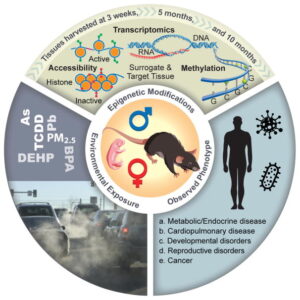Research
Current Projects
Determine how developmental exposure to fire retardants impacts sexually dimorphic neurodevelopment and behavior.
New fire retardants are rapidly entering the market to replace older chemicals with known neurotoxicity. Little to nothing is known about the potential health effects of these newer compounds, particularly to children. Through collaborative efforts with our colleagues at Duke and NIEHS/NTP we are working to characterize if and how newer fire retardants including organophosphate ester flame retardants (OPFRs) and the commercial mixture Firemaster 550 influence brain development and behavior using a variety of rodent models. We are also exploring how endocrine disruption at the level of the placenta contributes to neurodevelopmental impairments.
Examine how EDCs impact pro-social behaviors and circuits
Ongoing studies in prairie voles (socially monogamous rodents) are revealing profound effects of developmental exposure to flame retardants and other EDCs on social behavior, and seeking to understand the mechanisms by which these outcomes occur. Areas of focus include the oxytocin and vasopressin system, and kisspeptin pathways.
Establish if epigenetic marks in peripheral tissues reflect epigenetic and phenotypic effects in brain.
Epigenetic reprogramming may be a way in which exogenous chemicals alter the developing brain. This project, led by our NC State colleague Dr. David Aylor and other members of the NIEHS Target II Consortium is undertaking a series of studies aimed at understanding how well epigenetic “marks” in readily accessible tissues like blood and skin cells reflect “marks” in target tissues of interest which are not as readily accessible, such as brain.


